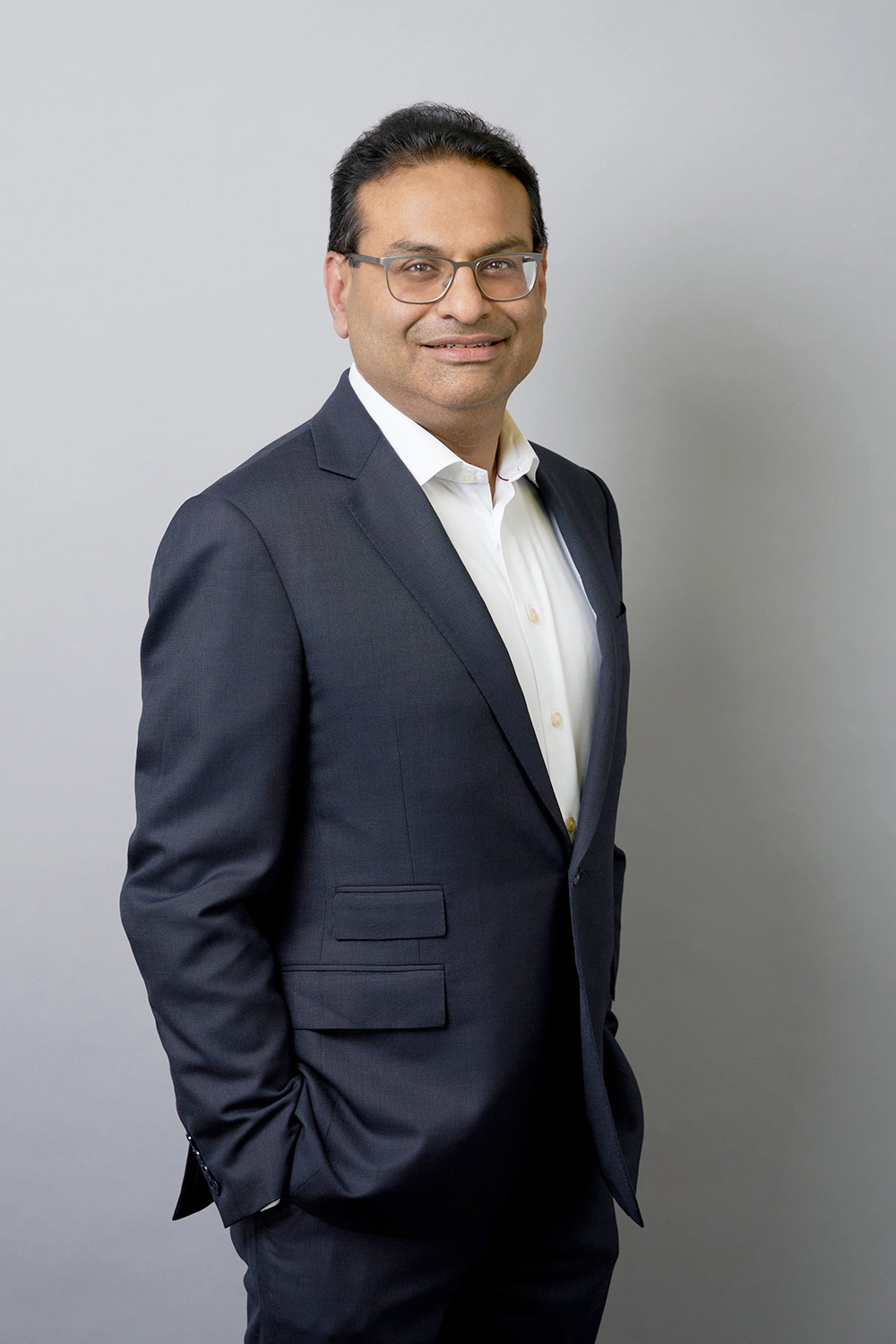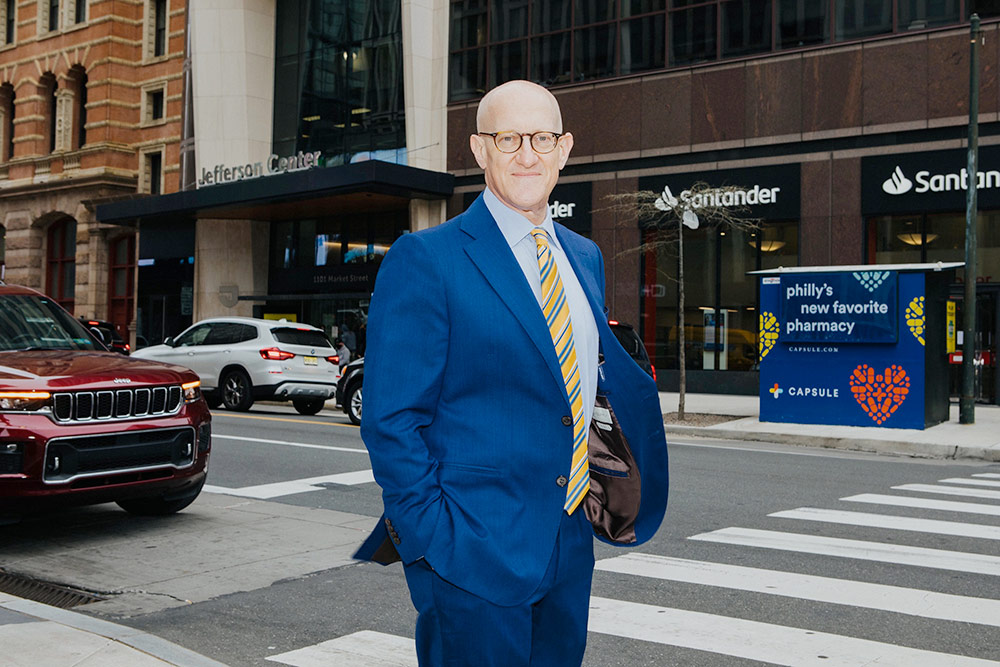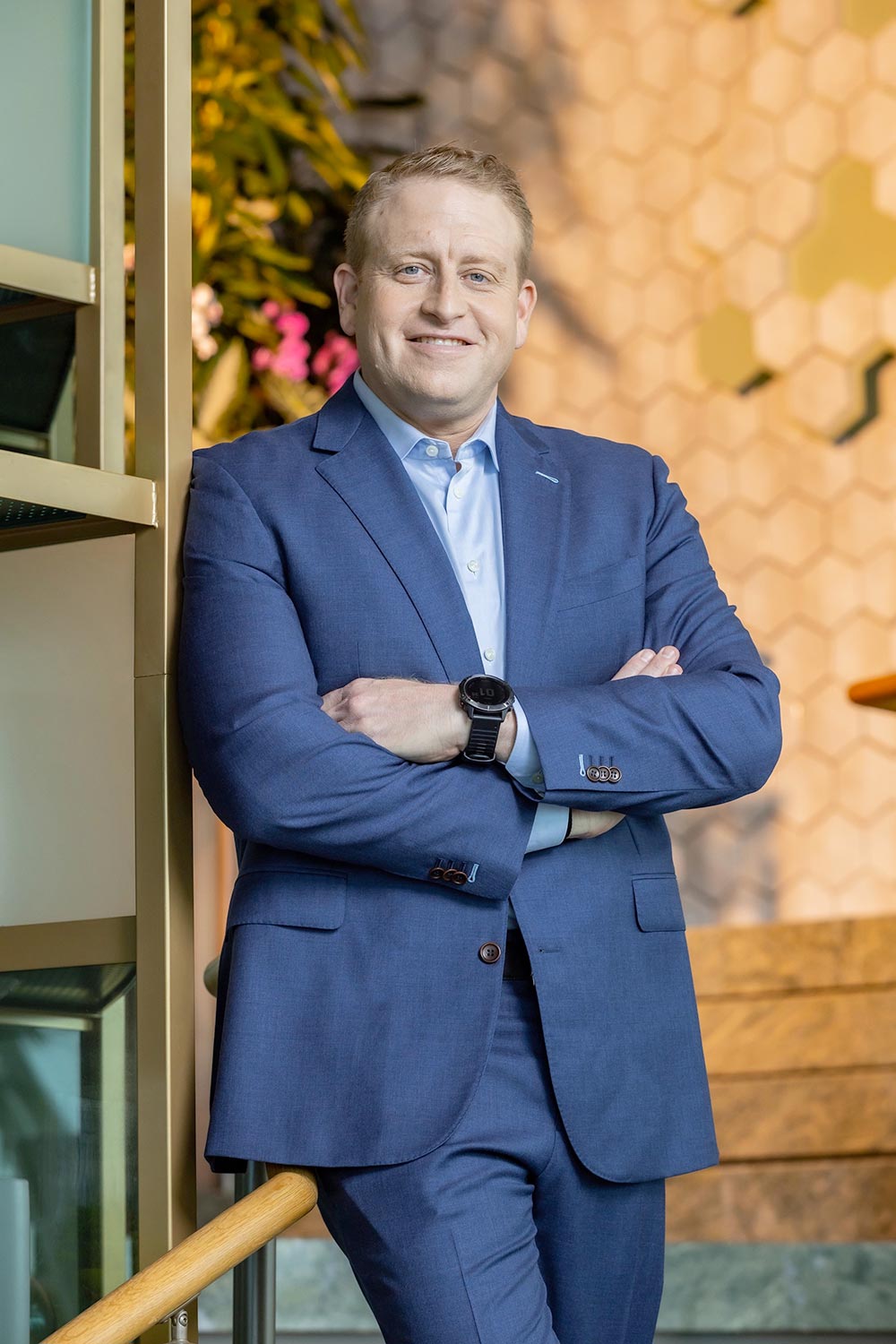不管是否情愿,CEO们需要放弃固有的“人设”
要说疫情期间各公司首席执行官的工作职责是什么,你可能想象不到这个故事开头。这是利洁时集团(Reckitt Benckiser Group)的拉克斯曼·纳拉西姆汉和同事开视频会的故事。该集团总部位于英国,主要生产清洁和个人护理产品,旗下品牌包括Lysol、Woolite、Clearasil等。拉克斯曼毕业于沃顿商学院,曾在麦肯锡(McKinsey)任合伙人,会说多种语言。就在疫情爆发前几个月,他才被任命为该公司首席执行官,期待他能带领公司扭转局面。当时,纳拉西姆汉在他位于伦敦西区的公寓里,正在策划公司的一次重要战略转型,涉及价值数十亿美元的品牌买卖。
就在这时,他79岁的母亲走进了镜头里,对他说:“抱歉打扰,但你没把垃圾拿出去。”
他做了作为儿子唯一能做的选择:暂停会议,倒垃圾。

今天再回头看,纳拉西姆汉将那一刻视为恩赐。正是那一刻,他理解了各行各业和世界各地的首席执行官们会在接下来的两年里认识到的重要一点。“我发现,对于组织而言,做到超级接地气十分重要。”他说,“让人们看到真实的你,看到你面对的所有弱点。”
疫情改变了首席执行官的职责,这种改变往往与领导者的传统角色存在天然冲突,他们不得不做出极大的改变。他们本应该见多识广、准备充分、牢牢控制局面,不应该有弱点。他们应该乐观自信。智睿咨询有限公司(Development Dimensions International)的高管兼首席执行官培训师马特•佩斯表示:“成为首席执行官意味着,除了必须做好本职工作外,还必须演好人设。”但在这场百年一遇的危机里,没有剧本,他们有时不得不放弃人设。
高管猎头公司史宾沙(Spencer Stuart)的吉姆•西特林表示,广泛说来,“首席执行官们从像神一样变得更有人情味了。”在疫情爆发后的前六个月,西特林与100多名首席执行官进行交谈。他们花了大量时间来处理员工的情感需求,尽管并非所有人都擅长此道。“有两种趋势出现了融合。”西特林表示,“趋势一是认识到目标的重要性,10年前就开始了,但最近加速了,首席执行官们对此进行了深入挖掘。另外一种趋势是,开始允许首席执行官展现真实和真我,保持透明。”其他关注该领域的咨询师、教授和专家也注意到了类似趋势。
一些人在变化中苦苦挣扎。还有一些欣然接受。现在,不管愿不愿意、舒不舒服,所有的首席执行官和他们的继任者都必须面对这个新现实:疫情改变了当好企业掌门人所需的条件。
人文关怀成为头等大事
疫情到来时,许多首席执行官立刻意识到,员工们最关心的事源于人类最原始的恐惧,不仅是对自己的生计,也是对家人生命的关心。这是领导者最需要解决的问题,尽管如何解决还不清楚。“很多人都指望从你这得到指导或支持,得到答案。”在史宾沙公司从事首席执行官业务的凯特•赫尔利表示,“你有责任给他们情感支撑,或许以前你不需要这么做。“
一些领导者迅速做出调整。猎头公司海德思哲(Heidrick & Struggles)的顾问罗斯•盖利说:“人文关怀成为头等大事。”按照史宾沙公司北美首席执行官继任业务负责人凯茜•安特拉斯恩的说法,某家大型保险公司的首席执行官原本是个不苟言笑的人,“而那时他在职工大会上甚至没谈一点业务。他只是表达了关爱、同情、关心,传达了与员工福祉有关的信息。”一些行业的恐惧感格外强烈,医疗行业尤甚。
“维系员工的信任成了我们的首要任务。”杰弗逊健康(Jefferson Health)的总裁布鲁斯·梅耶说,该集团在费城地区拥有18家医院和100家门诊。他不得不不断回答这些问题:“我们会如何保护你们?会如何为你们提供一个安全的工作环境,确保你们不会因为继续工作而危及自己或家人?”商业问题退居次位。这是生死攸关的问题。
照顾员工的需求是件辛苦事。纳拉希姆汉说,由于形势严峻,而公司里的员工还不太熟悉他,去年他给公司400名员工分别打了两次15分钟的电话。算一下,折合一个月的全职工作。
迈耶每三个星期都会在集团下属的18家医院轮转一圈,每家医院半天。也就是说,每15个工作日中要花9天,唯一不同的是,疫情期间,每周的工作日都不止5天,每个工作日也超过两个半天相加。他在医院大厅里巡场时,主要表达感谢,询问员工是否需要什么帮助。“我并不能总是立刻给他们提供帮助,”他回忆道,“但至少我了解了,倾听了。”

疫情初期,害怕的不仅是员工。首席执行官们也是如此,他们不仅和每个人一样,担心家人和朋友的健康,还因为自己根本不知道要怎么做而感到害怕。危机领导策略中很重要的一部分是让员工和其他成员相信,公司以前曾经历过这种考验,已经吸取了教训,变得更加强大。如果面临的危机是经济衰退、通货膨胀、战争或自然灾害,这种策略没有问题。但现存的公司中没有几家曾经经历过上一次全球性疫情,而上一次疫情也是很久以前的事了(1918年),对今天几乎没有什么借鉴意义。直白地说,领导者不知道自己还能不能领导。
世界各地的首席执行官们分别在2020年7月和5个月后接受了哈佛商学院教授鲍里斯·格罗伊斯伯格及其同事的采访,他们在采访中敞开心扉。他们承认自己面临个人危机,其中一位受访者称,自己试图在“没有任何人知道答案“的情况下领导公司。另外一个人的描述非常形象,他说,疫情击中了自身领导能力的要害所在,自己“突然意识到,所有过去没有做/推迟做的决定,需要在同一时间做出决定。”这种感觉就像是“因为推迟了这些事情,现在要付出代价,要在同一时间经历一切,如噩梦一般。”
作为当地政府的首席执行官,费城市长吉姆·肯尼不仅要应对疫情,还要面对2020年5月乔治·弗洛伊德被杀后引发的社会动荡。抗议活动除了本身的影响,还可能引发新冠肺炎病例激增。“我还记得,当时我坐在紧急行动中心,盯着大概10块大屏,每一块屏幕上都显示着东西在被烧毁,汽车在被点燃。”他向本刊表示,“你真的不知道接下来该做什么。听起来有点无助。我认为从某些方面来讲,我们的确感到无助和迷茫。”

选择和压力可能会非常痛苦。皇家加勒比的首席执行官杰森·利伯蒂在疫情初期是该公司的首席财务官,同时兼管其他业务。他说,与所有邮轮公司一样,疫情意味着他的公司“被一颗流星直接击中了。被流星击中仍能幸存的物种几乎不存在。”他和家人从迈阿密搬到了北卡罗来纳州,在那里,他日日奔波,筹集巨额资金以帮助公司度过难关。他回忆道,那年5月,有一场非常重要的借贷活动,“一签完文件,我立刻就往医院赶,我母亲在几个小时后去世了。”
其他一些领导者不得不在公司和家庭之间做出选择。一位首席执行官告诉格罗伊斯伯格及其同事,他做出了一个艰难的决定:“搬到另一个离员工更近的城市,但要离开家人。”利洁时的纳拉西姆汉有19个月没见过女儿;她在美国,而他在英国。“哪怕你已经当上了首席执行官,你还承担着多重身份。”他说,“有些人已经两年没见过父母了,因为担心父母会生病。这些事情确实会在某种程度上对你产生影响。19个月没见到女儿就影响了我。”
为了应对疫情危机和自身的领导力危机,许多首席执行官做的第一步是从个人的混乱中建立秩序。“我一直在小心翼翼地保持家庭和工作间的界限,现在这条界限消失了。”杰弗逊医疗的梅耶回忆道,这也是每一名上班族的抱怨。“有大约一年的时间,这条界限完全不存在。”他说,自己仍在努力重建边界。晚餐是第一步。“在我们家,一起吃晚餐真的非常重要。”他说。而在疫情最严重的时候,“晚餐变得更加重要”。
他的经历非常典型。格罗伊斯伯格及其同事在报告中指出,“首席执行官们要做好自我关怀,最基本的一点是给“失去的(工作日)秩序”找到替代品,不断努力维持新秩序。
首席执行官们在疫情中,往往会去健身,健身也被赋予了更多意义。在格罗伊斯伯格和首席执行官们的谈话中,健身是最常出现的话题之一,许多受访者说自己在疫情期间加大了健身强度。他们提到了健身公认的许多好处——改善情绪、判断力、耐力和思维敏锐度。但还有一点也很关键。不管他们有没有提到,但很明显,对于他们中的许多人来说,健身也是一种冥想方式。他们给格罗伊斯伯格描述的健身项目中,大多数 “本质上是重复的、冥想性的”。格罗伊斯伯格及其同事在报告中写道:“没有人提到赛跑或自行车比赛、拳击或其他任何竞争性或攻击性的体育活动。”想想看,首席执行官可是世界上最好胜的一批人,这个现象很不寻常。然而,在疫情中,他们并不需要更多竞争。格罗伊斯伯格的研究报告写道:“一半受访者都认为日常冥想或祈祷是他们进行自我关怀的重要方法和基础要素,这也与上述观察相吻合。”
和所有人一样,首席执行官也需要可以交心交谈、能够信任的同事、朋友或同行,甚至比任何人都需要。身居高位的人往往十分孤独,而且很难找到能理解自己困境的知己。一些首席执行官说,疫情期间进行这样的谈话比以前更容易。惠普(HP )的首席执行官恩里克•洛雷斯表示,仅仅需要一个Zoom会议邀请链接,而且这期间“每个人都想和别人建立联络”,包括“面临类似问题的其他公司的首席执行官”。
但也有其他一些领导者比以前更孤独。费城市长肯尼把前费城市长、前宾夕法尼亚州州长埃德•伦德尔视为“朋友、向导和知己”,他说,但“我甚至不能给他打电话问他,‘你会怎么做?’因为没人知道该怎么做。”迈耶害怕承认自己在苦苦支撑。“能让我倾诉自己内心最深处的想法、担忧和焦虑的朋友圈变得越来越小。”他说,“老实说,在疫情的某些时候,在组织内部根本没有人(可以交流)。”
许多首席执行官把高管教练当作知己。海德思哲的罗斯•盖利说:“我们合作过的大多数首席执行官都有一位外部教练,对着这个人,他们可以无所不谈,而且确信自己会得到诚实的反馈。这是他们的安全港。”
即将到来的首席执行官离职潮
在新冠疫情爆发后的大约前6个月,首席执行官们都处于应急管理模式。然后,政府推出了刺激措施和PPP纾困贷款来复苏经济,几个月后,疫苗出现了。他们终于可以松口气了,至少是稍微松口气。有些人在此期间失去了家人朋友。他们开始像许许多多其他人一样,重新评估自己的生活、职业和未来。曾在亿康先达(Egon Zehnder)猎头公司担任高管的克劳迪奥•费尔南德斯表示:“他们开始倾听自己内心的声音,这个声音回响在我们每个人心中。他们重新计算一切。我想生活在什么地方?我有多想待在办公室?我真正想为什么样的公司工作?” 克劳迪奥目前为首席执行官提供咨询,并在哈佛商学院的高管培训项目中授课。
一些人对自己有了新的认识,决定离开。另一些人则面对着自己已经筋疲力尽的现实。高管教练佩斯说:“疫情期间,有太多企业掌门人和高管谈过自己打算什么时候离职。‘真的太难了’,好多人都这么说。”

许多已经决定要改变生活的首席执行官,还有其他许多原本计划在2020或2021年离职的首席执行官,仍然没有离开。史宾沙的安特拉斯恩说:“一些公司的董事会暂停了首席执行官的轮替。首席执行官也觉得自己要掌好舵,这是使命的召唤。”根据再就业服务公司Challenger Gray & Christmas的说法,过去两年,上市公司首席执行官的流失率降至至少10年来的最低水平。
现在,随着疫情似乎出现了长期向好的趋势,高管层的大门可能即将打开。史宾沙公司的西特林认为,2022年将是首席执行官离职率“创纪录的一年”。杰弗逊医疗的迈耶一直在关注业内同行,他说:“特别是在首席执行官这个级别,从现在开始将出现一波退休潮。当人们开始回顾自己经历的一切时,他们会说,‘ 我受够了。’”

随着疫情期间在职的首席执行官相继离任,而员工们也在期待后疫情时代的到来,过去两年那种高度人性化、情绪敏感型的领导风格还会继续吗?最大的可能性是,员工不会像疫情之前那样完全重返办公室,消费者也不会像以前一样完全重回实体店,与之类似,首席执行官也不会完全回到疫情前的领导风格。
下一代首席执行官将是一些因为疫情伤痕累累的经理人,下下一代也可能如此。此外,疫情期间的经历也改变了员工的期望值。他们已经习惯了这种隆重的待遇,而疫情导致的劳动力短缺只是其中一部分原因。史宾沙的赫尔利说:“现在的领导方式比以往任何时候都更加个人性化。这是员工们的要求。他们不会说,‘想想现在的形势吧。’他们会说,‘想想我吧。’”短期内他们不会改掉这个习惯。
首席执行官们可以松口气了,因为他们已经度过了职业生涯中最艰难、最迷茫、最疲惫的一段时间,对一些人来说,也可能是最可怕的一段经历。然而,历史表明,有一天他们再次想起这一切时,可能会心怀感激。过去两年是一次实打实的磨炼。磨炼很痛苦,迫使他们比大多数人更深入地审视自己。这改变了他们。很少有人主动寻求磨炼。但那些经历过的人几乎总是会在很久以后回头看时得出结论:这段经历让他们变得更好。(财富中文网)
译者:Agatha
要说疫情期间各公司首席执行官的工作职责是什么,你可能想象不到这个故事开头。这是利洁时集团(Reckitt Benckiser Group)的拉克斯曼·纳拉西姆汉和同事开视频会的故事。该集团总部位于英国,主要生产清洁和个人护理产品,旗下品牌包括Lysol、Woolite、Clearasil等。拉克斯曼毕业于沃顿商学院,曾在麦肯锡(McKinsey)任合伙人,会说多种语言。就在疫情爆发前几个月,他才被任命为该公司首席执行官,期待他能带领公司扭转局面。当时,纳拉西姆汉在他位于伦敦西区的公寓里,正在策划公司的一次重要战略转型,涉及价值数十亿美元的品牌买卖。
就在这时,他79岁的母亲走进了镜头里,对他说:“抱歉打扰,但你没把垃圾拿出去。”
他做了作为儿子唯一能做的选择:暂停会议,倒垃圾。
今天再回头看,纳拉西姆汉将那一刻视为恩赐。正是那一刻,他理解了各行各业和世界各地的首席执行官们会在接下来的两年里认识到的重要一点。“我发现,对于组织而言,做到超级接地气十分重要。”他说,“让人们看到真实的你,看到你面对的所有弱点。”
疫情改变了首席执行官的职责,这种改变往往与领导者的传统角色存在天然冲突,他们不得不做出极大的改变。他们本应该见多识广、准备充分、牢牢控制局面,不应该有弱点。他们应该乐观自信。智睿咨询有限公司(Development Dimensions International)的高管兼首席执行官培训师马特•佩斯表示:“成为首席执行官意味着,除了必须做好本职工作外,还必须演好人设。”但在这场百年一遇的危机里,没有剧本,他们有时不得不放弃人设。
高管猎头公司史宾沙(Spencer Stuart)的吉姆•西特林表示,广泛说来,“首席执行官们从像神一样变得更有人情味了。”在疫情爆发后的前六个月,西特林与100多名首席执行官进行交谈。他们花了大量时间来处理员工的情感需求,尽管并非所有人都擅长此道。“有两种趋势出现了融合。”西特林表示,“趋势一是认识到目标的重要性,10年前就开始了,但最近加速了,首席执行官们对此进行了深入挖掘。另外一种趋势是,开始允许首席执行官展现真实和真我,保持透明。”其他关注该领域的咨询师、教授和专家也注意到了类似趋势。
一些人在变化中苦苦挣扎。还有一些欣然接受。现在,不管愿不愿意、舒不舒服,所有的首席执行官和他们的继任者都必须面对这个新现实:疫情改变了当好企业掌门人所需的条件。
人文关怀成为头等大事
疫情到来时,许多首席执行官立刻意识到,员工们最关心的事源于人类最原始的恐惧,不仅是对自己的生计,也是对家人生命的关心。这是领导者最需要解决的问题,尽管如何解决还不清楚。“很多人都指望从你这得到指导或支持,得到答案。”在史宾沙公司从事首席执行官业务的凯特•赫尔利表示,“你有责任给他们情感支撑,或许以前你不需要这么做。“
一些领导者迅速做出调整。猎头公司海德思哲(Heidrick & Struggles)的顾问罗斯•盖利说:“人文关怀成为头等大事。”按照史宾沙公司北美首席执行官继任业务负责人凯茜•安特拉斯恩的说法,某家大型保险公司的首席执行官原本是个不苟言笑的人,“而那时他在职工大会上甚至没谈一点业务。他只是表达了关爱、同情、关心,传达了与员工福祉有关的信息。”一些行业的恐惧感格外强烈,医疗行业尤甚。
“维系员工的信任成了我们的首要任务。”杰弗逊健康(Jefferson Health)的总裁布鲁斯·梅耶说,该集团在费城地区拥有18家医院和100家门诊。他不得不不断回答这些问题:“我们会如何保护你们?会如何为你们提供一个安全的工作环境,确保你们不会因为继续工作而危及自己或家人?”商业问题退居次位。这是生死攸关的问题。
照顾员工的需求是件辛苦事。纳拉希姆汉说,由于形势严峻,而公司里的员工还不太熟悉他,去年他给公司400名员工分别打了两次15分钟的电话。算一下,折合一个月的全职工作。
迈耶每三个星期都会在集团下属的18家医院轮转一圈,每家医院半天。也就是说,每15个工作日中要花9天,唯一不同的是,疫情期间,每周的工作日都不止5天,每个工作日也超过两个半天相加。他在医院大厅里巡场时,主要表达感谢,询问员工是否需要什么帮助。“我并不能总是立刻给他们提供帮助,”他回忆道,“但至少我了解了,倾听了。”
疫情初期,害怕的不仅是员工。首席执行官们也是如此,他们不仅和每个人一样,担心家人和朋友的健康,还因为自己根本不知道要怎么做而感到害怕。危机领导策略中很重要的一部分是让员工和其他成员相信,公司以前曾经历过这种考验,已经吸取了教训,变得更加强大。如果面临的危机是经济衰退、通货膨胀、战争或自然灾害,这种策略没有问题。但现存的公司中没有几家曾经经历过上一次全球性疫情,而上一次疫情也是很久以前的事了(1918年),对今天几乎没有什么借鉴意义。直白地说,领导者不知道自己还能不能领导。
世界各地的首席执行官们分别在2020年7月和5个月后接受了哈佛商学院教授鲍里斯·格罗伊斯伯格及其同事的采访,他们在采访中敞开心扉。他们承认自己面临个人危机,其中一位受访者称,自己试图在“没有任何人知道答案“的情况下领导公司。另外一个人的描述非常形象,他说,疫情击中了自身领导能力的要害所在,自己“突然意识到,所有过去没有做/推迟做的决定,需要在同一时间做出决定。”这种感觉就像是“因为推迟了这些事情,现在要付出代价,要在同一时间经历一切,如噩梦一般。”
作为当地政府的首席执行官,费城市长吉姆·肯尼不仅要应对疫情,还要面对2020年5月乔治·弗洛伊德被杀后引发的社会动荡。抗议活动除了本身的影响,还可能引发新冠肺炎病例激增。“我还记得,当时我坐在紧急行动中心,盯着大概10块大屏,每一块屏幕上都显示着东西在被烧毁,汽车在被点燃。”他向本刊表示,“你真的不知道接下来该做什么。听起来有点无助。我认为从某些方面来讲,我们的确感到无助和迷茫。”
选择和压力可能会非常痛苦。皇家加勒比的首席执行官杰森·利伯蒂在疫情初期是该公司的首席财务官,同时兼管其他业务。他说,与所有邮轮公司一样,疫情意味着他的公司“被一颗流星直接击中了。被流星击中仍能幸存的物种几乎不存在。”他和家人从迈阿密搬到了北卡罗来纳州,在那里,他日日奔波,筹集巨额资金以帮助公司度过难关。他回忆道,那年5月,有一场非常重要的借贷活动,“一签完文件,我立刻就往医院赶,我母亲在几个小时后去世了。”
其他一些领导者不得不在公司和家庭之间做出选择。一位首席执行官告诉格罗伊斯伯格及其同事,他做出了一个艰难的决定:“搬到另一个离员工更近的城市,但要离开家人。”利洁时的纳拉西姆汉有19个月没见过女儿;她在美国,而他在英国。“哪怕你已经当上了首席执行官,你还承担着多重身份。”他说,“有些人已经两年没见过父母了,因为担心父母会生病。这些事情确实会在某种程度上对你产生影响。19个月没见到女儿就影响了我。”
为了应对疫情危机和自身的领导力危机,许多首席执行官做的第一步是从个人的混乱中建立秩序。“我一直在小心翼翼地保持家庭和工作间的界限,现在这条界限消失了。”杰弗逊医疗的梅耶回忆道,这也是每一名上班族的抱怨。“有大约一年的时间,这条界限完全不存在。”他说,自己仍在努力重建边界。晚餐是第一步。“在我们家,一起吃晚餐真的非常重要。”他说。而在疫情最严重的时候,“晚餐变得更加重要”。
他的经历非常典型。格罗伊斯伯格及其同事在报告中指出,“首席执行官们要做好自我关怀,最基本的一点是给“失去的(工作日)秩序”找到替代品,不断努力维持新秩序。
首席执行官们在疫情中,往往会去健身,健身也被赋予了更多意义。在格罗伊斯伯格和首席执行官们的谈话中,健身是最常出现的话题之一,许多受访者说自己在疫情期间加大了健身强度。他们提到了健身公认的许多好处——改善情绪、判断力、耐力和思维敏锐度。但还有一点也很关键。不管他们有没有提到,但很明显,对于他们中的许多人来说,健身也是一种冥想方式。他们给格罗伊斯伯格描述的健身项目中,大多数 “本质上是重复的、冥想性的”。格罗伊斯伯格及其同事在报告中写道:“没有人提到赛跑或自行车比赛、拳击或其他任何竞争性或攻击性的体育活动。”想想看,首席执行官可是世界上最好胜的一批人,这个现象很不寻常。然而,在疫情中,他们并不需要更多竞争。格罗伊斯伯格的研究报告写道:“一半受访者都认为日常冥想或祈祷是他们进行自我关怀的重要方法和基础要素,这也与上述观察相吻合。”
和所有人一样,首席执行官也需要可以交心交谈、能够信任的同事、朋友或同行,甚至比任何人都需要。身居高位的人往往十分孤独,而且很难找到能理解自己困境的知己。一些首席执行官说,疫情期间进行这样的谈话比以前更容易。惠普(HP )的首席执行官恩里克•洛雷斯表示,仅仅需要一个Zoom会议邀请链接,而且这期间“每个人都想和别人建立联络”,包括“面临类似问题的其他公司的首席执行官”。
但也有其他一些领导者比以前更孤独。费城市长肯尼把前费城市长、前宾夕法尼亚州州长埃德•伦德尔视为“朋友、向导和知己”,他说,但“我甚至不能给他打电话问他,‘你会怎么做?’因为没人知道该怎么做。”迈耶害怕承认自己在苦苦支撑。“能让我倾诉自己内心最深处的想法、担忧和焦虑的朋友圈变得越来越小。”他说,“老实说,在疫情的某些时候,在组织内部根本没有人(可以交流)。”
许多首席执行官把高管教练当作知己。海德思哲的罗斯•盖利说:“我们合作过的大多数首席执行官都有一位外部教练,对着这个人,他们可以无所不谈,而且确信自己会得到诚实的反馈。这是他们的安全港。”
即将到来的首席执行官离职潮
在新冠疫情爆发后的大约前6个月,首席执行官们都处于应急管理模式。然后,政府推出了刺激措施和PPP纾困贷款来复苏经济,几个月后,疫苗出现了。他们终于可以松口气了,至少是稍微松口气。有些人在此期间失去了家人朋友。他们开始像许许多多其他人一样,重新评估自己的生活、职业和未来。曾在亿康先达(Egon Zehnder)猎头公司担任高管的克劳迪奥•费尔南德斯表示:“他们开始倾听自己内心的声音,这个声音回响在我们每个人心中。他们重新计算一切。我想生活在什么地方?我有多想待在办公室?我真正想为什么样的公司工作?” 克劳迪奥目前为首席执行官提供咨询,并在哈佛商学院的高管培训项目中授课。
一些人对自己有了新的认识,决定离开。另一些人则面对着自己已经筋疲力尽的现实。高管教练佩斯说:“疫情期间,有太多企业掌门人和高管谈过自己打算什么时候离职。‘真的太难了’,好多人都这么说。”
许多已经决定要改变生活的首席执行官,还有其他许多原本计划在2020或2021年离职的首席执行官,仍然没有离开。史宾沙的安特拉斯恩说:“一些公司的董事会暂停了首席执行官的轮替。首席执行官也觉得自己要掌好舵,这是使命的召唤。”根据再就业服务公司Challenger Gray & Christmas的说法,过去两年,上市公司首席执行官的流失率降至至少10年来的最低水平。
现在,随着疫情似乎出现了长期向好的趋势,高管层的大门可能即将打开。史宾沙公司的西特林认为,2022年将是首席执行官离职率“创纪录的一年”。杰弗逊医疗的迈耶一直在关注业内同行,他说:“特别是在首席执行官这个级别,从现在开始将出现一波退休潮。当人们开始回顾自己经历的一切时,他们会说,‘ 我受够了。’”
随着疫情期间在职的首席执行官相继离任,而员工们也在期待后疫情时代的到来,过去两年那种高度人性化、情绪敏感型的领导风格还会继续吗?最大的可能性是,员工不会像疫情之前那样完全重返办公室,消费者也不会像以前一样完全重回实体店,与之类似,首席执行官也不会完全回到疫情前的领导风格。
下一代首席执行官将是一些因为疫情伤痕累累的经理人,下下一代也可能如此。此外,疫情期间的经历也改变了员工的期望值。他们已经习惯了这种隆重的待遇,而疫情导致的劳动力短缺只是其中一部分原因。史宾沙的赫尔利说:“现在的领导方式比以往任何时候都更加个人性化。这是员工们的要求。他们不会说,‘想想现在的形势吧。’他们会说,‘想想我吧。’”短期内他们不会改掉这个习惯。
首席执行官们可以松口气了,因为他们已经度过了职业生涯中最艰难、最迷茫、最疲惫的一段时间,对一些人来说,也可能是最可怕的一段经历。然而,历史表明,有一天他们再次想起这一切时,可能会心怀感激。过去两年是一次实打实的磨炼。磨炼很痛苦,迫使他们比大多数人更深入地审视自己。这改变了他们。很少有人主动寻求磨炼。但那些经历过的人几乎总是会在很久以后回头看时得出结论:这段经历让他们变得更好。(财富中文网)
译者:Agatha
It was an unexpected introduction to the CEO’s job in the age of the pandemic. Laxman Narasimhan was running a video meeting with colleagues at Reckitt Benckiser Group, the U.K.-based maker of cleaning and personal care products—Lysol, Woolite, Clearasil, many others. A Wharton-educated multilingual former McKinsey partner, he had been brought in as CEO just months earlier, before the pandemic, to turn the company around. Now, from his apartment in West London, he was orchestrating a major strategic transformation that would require buying and selling billions of dollars’ worth of brands.
Then his 79-year-old mother walked into camera range and said, “Sorry to interrupt you, but you haven’t taken the garbage out.”
He did the only thing a son could do. He put the meeting on hold and took the garbage out.
Today Narasimhan looks back on that moment as a gift. It helped him understand something CEOs across industries and around the world would discover in the following two years. “I found the magic in an organization is about being super down to earth,” he says, “letting people see you for who you are, with all the vulnerabilities that you face.”
The pandemic has changed the CEO’s job, often in ways that inherently clash with a leader’s traditional role, and CEOs have been forced to change profoundly. They’re supposed to be informed, prepared, and firmly in charge, not vulnerable. They’re supposed to be optimistic and confident. “Being a CEO means that in addition to having to do the job, you have to adopt the persona,” says Matt Paese, an executive and CEO coach at Development Dimensions International. But in a once-a-century crisis with no playbook, they sometimes had to abandon that persona.
More broadly, “CEOs went from being godlike to being more human,” says Jim Citrin of the Spencer Stuart executive search firm, who interviewed over 100 CEOs in the pandemic’s first six months. They spent significant time addressing employees’ emotional needs, though not all were adept at that skill. “There was a confluence of two trends,” Citrin says. “One started 10 years ago but just accelerated, and that is the importance of purpose. CEOs really tapped into that. The other one was the permission to be real and authentic and transparent.” Consultants, professors, and other experts who study CEOs noted similar trends.
Some CEOs struggled with the changes. Others embraced them. Now, willingly or not, comfortably or not, all CEOs and their successors will have to confront a new reality: The pandemic has changed what it takes to be an effective CEO.
Humanity comes to the fore
When COVID-19 arrived, many CEOs realized immediately that employees’ overriding reaction was raw fear, not just for their livelihoods but also for their families’ lives. That was the issue leaders most needed to address, even if how to do so wasn’t clear. “You have a lot of people looking to you for guidance or support, for answers,” says Kate Hurley, a member of Spencer Stuart’s CEO practice. “And it’s your responsibility to show up for them emotionally in a way that maybe you haven’t had to previously.”
Some leaders quickly shifted gears. “Humanity came to the fore,” says Rose Gailey, a consultant at the Heidrick & Struggles search firm. The CEO of a major insurance company, a buttoned-up, nuts-and-bolts executive, “didn’t even talk about business at his town halls,” says Cathy Anterasian, who leads Spencer Stuart’s CEO succession services in North America. “He was just sending messages about care, empathy, concern, the well-being of the workforce.” In some industries the fears were extraordinarily intense, none more so than health care.
“Maintaining trust with our workforce became the No. 1 priority,” says Bruce Meyer, president of Jefferson Health, a Philadelphia-area system of 18 hospitals and 100 ambulatory care centers. Questions he had to keep answering: “How are we protecting you? How are we allowing you to have a safe working environment where you can feel like you’re not going to jeopardize yourself or your family by continuing to work?” Business issues were secondary. This was life and death.
Ministering to the human needs of employees was hard work. Narasimhan says that because the crisis was so intense and he wasn’t well-known at the company, last year he made 15-minute calls to 400 employees, twice a year. Do the math: That’s a month of full-time work.
Meyer spent a half-day at every one of Jefferson Health’s 18 hospitals every three weeks. That’s nine days out of 15, except that in the pandemic, a workweek was more than five days and a workday was more than two half-days. As he walked the hospitals’ halls, he mostly thanked people and asked how he could help them. “I couldn’t always provide it instantaneously,” he recalls, “but at least I understood and was listening.”
It wasn’t just employees who were afraid in the pandemic’s early days. CEOs were too—not only in the way everyone was afraid, for families’ and friends’ health, but also because they simply didn’t know what to do. Part of the crisis leadership playbook is to reassure employees and other constituents that the organization has been through this kind of trial before, has learned from it, and has emerged stronger. That approach works when the crisis is a recession, inflation, war, or natural disaster. But few of today’s companies were around in the last global pandemic, and it was so long ago (1918) that it offers few lessons for today. In stark terms, leaders didn’t know if they could lead.
CEOs from around the world opened up to Harvard Business School professor Boris Groysberg and colleagues, who interviewed them in July 2020 and again five months later. They acknowledged the personal crisis they confronted, trying to lead when “no one knows the answer,” as one put it. Another confessed vividly that the pandemic struck at the heart of his leadership ability, saying it was like “[waking] up to all of the decisions I had not made/delayed in the past, and they all needed to be decided on at the same time.” The feeling was one of “paying the price of having postponed them and living the nightmare of all of it at once.”
A government chief executive, Philadelphia Mayor Jim Kenney faced not just the pandemic but also the civil unrest following the murder of George Floyd in May 2020. Beyond the significance of the protests, they also held the danger of sparking a surge in COVID-19 cases. “I remember sitting in the emergency operations center watching about 10 screens of things burning, cars being set on fire,” he tells Fortune. “You really don’t know what to do next. That sounds kind of helpless. And I think in some ways we felt a little bit helpless and lost.”
The choices and stresses could be wrenching. Royal Caribbean CEO Jason Liberty was CFO in the pandemic’s early days while also handling other executive tasks. As with all cruise lines, the pandemic meant his company “got directly hit by a meteor,” he says. “It’s very few species that survive a meteor.” He and his family moved from Miami to a home in North Carolina, where he spent long days raising the billions of dollars needed to get the company through. He recalls arranging a crucial lending facility in May. “As soon as I signed those documents, I had to rush to the hospital,” he says, “because my mother passed away a couple hours later.”
Other leaders had to choose between company and family. A CEO told Groysberg and colleagues about making the difficult decision to “move to a different city to be closer to the employees, [leaving] the family behind.” Reckitt’s Narasimhan didn’t see his daughter for 19 months; she was in the U.S., he in the U.K. “Even though you’re a CEO leader and all that, you’ve got these multiple roles,” he says. “Some people haven’t seen their parents for two years because they worry about them falling ill. It does at some point have an impact on you. And not seeing my daughter for 19 months had an impact on me.”
Responding to the pandemic crisis and to their own leadership crisis, many CEOs began by imposing order on their personal chaos. “The boundaries that I had very carefully established between my home life and my work life disappeared,” recalls Meyer of Jefferson Health, echoing a complaint of office workers everywhere. “For about a year, they utterly disappeared.” He says he’s still working to reestablish the boundaries. Dinner is a place to start. “In our family, family dinner is really, really important,” he says. In the depths of the pandemic, “it became even more important.”
His experience was typical. Groysberg and colleagues report that “the foundation of CEOs’ self-care was to replace the ‘lost structure’ of the workday” and to protect it through constant diligence.
A remarkably consistent element of CEOs’ response to the pandemic was exercise, which became something more. It was one of the most common themes of Groysberg’s CEOs, many of whom reported that they stepped up their pre-pandemic routines. Leaders reported the well-established benefits of exercise—improved mood, judgment, stamina, and mental sharpness. But there was another key element too. Whether CEOs mentioned it or not, it’s clear that for many of them exercise was also meditation. Many of the regimens described by Groysberg’s CEOs “were repetitive and contemplative in nature,” he and his colleagues report: “No one mentioned foot or bike racing, punching-bag work, or any other competitive or aggressive physical activity.” That is striking, considering that CEOs are among the world’s most competitive people. Yet in the pandemic crisis, more competition wasn’t what they needed. The Groysberg study reports, “This aligns with the fact that half of the sample considered daily meditation or prayer a crucial grounding element of their self-care.”
Like everyone, only more so, CEOs need trusted colleagues, friends, or peers with whom they can talk candidly. It really is lonely at the top, and it’s hard to find confidants who understand the quandaries CEOs face. Some bosses say that arranging those talks got easier in the pandemic. All it took was a Zoom invite, and “everybody wanted to connect,” says HP CEO Enrique Lores, including “CEOs of other companies that were going through similar issues.”
But other leaders felt even more alone. Mayor Kenney considers former Philadelphia mayor and former Pennsylvania governor Ed Rendell “a friend and guide and confidant,” he says, but “I couldn’t even call him and say, ‘What would you do?’ Because nobody knew what to do.” Meyer worried about confessing that he was struggling. “The inner circle to whom I would reveal my innermost thoughts and concerns and anxieties—that circle got way smaller,” he says. “There were portions of the pandemic, in all honesty, where there wasn’t anybody [to talk to] inside the organization at all.”
Many CEOs turned to executive coaches as confidants. “The majority of CEOs we’re working with have identified an external coach,” says Heidrick & Struggles’ Rose Gailey, “somebody they can just say anything to and have confidence they’ll get honest feedback. It’s a safe place for them.”
The coming wave of CEO departures
For six months or so after COVID-19 arrived, CEOs were in emergency management mode. Then stimulus checks and PPP loans resuscitated the economy, and a few months later, vaccines appeared. CEOs could finally unclench, at least a little. Some had lost family members or friends. They began to do what millions of others were doing: reassessing their lives, careers, and futures. “They started listening to the inner voice we all have within us,” says Claudio Fernández-Aráoz, a former executive at the Egon Zehnder search firm who now counsels CEOs and teaches them in executive education programs at the Harvard Business School. “They were recalculating everything. Where do I want to live? How much do I want to be in the office? What type of company do I really want to work for?”
Some CEOs came to new realizations about themselves and decided to leave. Others confronted the reality that they were worn out. “During COVID we heard a lot of CEOs and C-suite players talking about when they’re going to leave,” executive coach Paese reports. “‘This has become too difficult’—we got a lot of that.”
Many CEOs who have decided to change their lives, and others who had previously planned to step down in 2020 or 2021, still haven’t left. “Boards put CEO succession on hold,” notes Spencer Stuart’s Anterasian. “CEOs felt they would need to steer the ship. It was the call of duty.” CEO turnover at public companies plunged in the past two years to the lowest levels in at least a decade, says the Challenger Gray & Christmas outplacement services firm.
Now, with the pandemic seemingly in long-term decline, the C-suite gates may be about to open. Spencer Stuart’s Citrin believes 2022 “is really going to be a record year” for CEO departures. Meyer of Jefferson Health, observing his peers in health care, says that “particularly at the CEO level, there’s a whole wave of retirement starting now. As people start to process what we’ve been through, they say, ‘I’m just done.’”
As the pandemic CEOs step down, and as employees look ahead to a post-pandemic future, will the highly personal, emotionally aware leadership style of the past two years continue? The best bet is that just as workers won’t go all the way back to the office and shoppers won’t go all the way back to physical stores, CEOs won’t go all the way back to pre-pandemic leadership.
The next generation of CEOs, and likely the generation after that, will be managers who were scarred by the pandemic experience. In addition, that experience has changed employees’ expectations. It’s only partly because the pandemic labor shortage has accustomed them to royal treatment. “The approach to leadership right now is more personal than it ever has been,” says Hurley of Spencer Stuart. “That’s what employees are asking for. They’re not saying, ‘Think about the situation.’ They’re saying, ‘Think about me.’” They won’t break that habit anytime soon.
The pandemic CEOs are relieved to be past the most demanding, most disorienting, most exhausting experience of their careers, and for some the most frightening. Yet history suggests it’s just possible that they may someday remember it with gratitude. The past two years have been a classic crucible experience. It has been painful, and it has forced CEOs to look into themselves more deeply than most people ever do. It has transformed them. Few people seek out a crucible experience. But those who go through one almost always conclude much later, looking back, that it changed them for the better.













